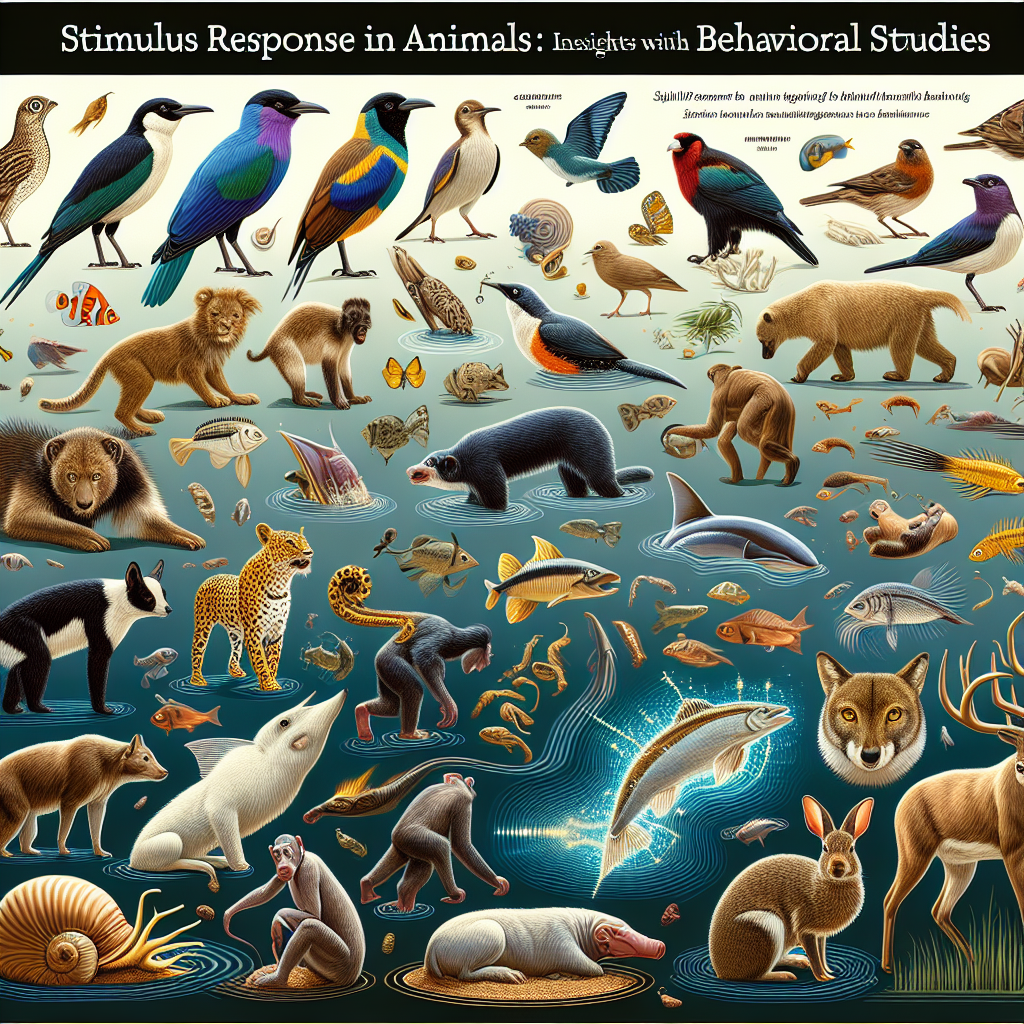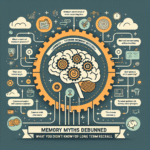
Introduction
Have you ever wondered why animals react the way they do to certain stimuli? The fascinating world of animal behavior is closely intertwined with the concept of stimulus response, revealing not just survival strategies but also the intricate workings of their minds. Understanding the principles of stimulus response in animals is not merely an academic pursuit; it holds essential insights for ecology, conservation, and even psychology, offering a lens through which we can explore the animal kingdom’s complexity.
In this in-depth article, we will delve into the nuances of stimulus response in animals, highlighting key insights from behavioral studies. We’ll uncover the remarkable ways animals interpret their environments, the underlying mechanisms driving their behaviors, and how these principles manifest in real-world scenarios. So, let’s embark on this enlightening journey!
What is Stimulus Response?
Before we dive deep, it’s crucial to define stimulus response. In essence, it refers to how an organism reacts to changes or stimuli in its environment. These stimuli can be external—like light, sound, or temperature—or internal, such as hunger or hormonal changes. The response can vary widely, from simple reflex actions to complex behaviors involving cognitive processes.
For example, when a dog hears a bell (stimulus), it may salivate (response) if it has learned that the sound predicts food. This classic Pavlovian response illustrates the power of conditioning in shaping behavior, a foundational concept in behavioral studies.
The Science Behind Stimulus Response
Physiological Mechanisms
Understanding stimulus response in animals begins with the physiological mechanisms involved. Sensory systems play a pivotal role in how animals detect stimuli. For instance, the eyes perceive light, the ears detect sound, and the nose senses odors, transmitting this information to the brain for interpretation.
A fantastic way to visualize this is through a simple flow chart:
| Stimulus Type | Sensory Organ | Response |
|---|---|---|
| Visual | Eyes | Flight or fight response |
| Auditory | Ears | Vocalization or alarm calls |
| Olfactory | Nose | Marking territory or feeding |
These interactions are essential in understanding how animals adapt to their surroundings and make life-or-death decisions.
Learning and Conditioning
The study of stimulus response in animals also explores how these responses evolve through learning. Take the example of operant conditioning, where behaviors are modified through rewards and punishments. B.F. Skinner, a psychologist known for his work in operant conditioning, demonstrated how animals can learn to associate certain behaviors with desirable outcomes.
Case Study: Skinner Box Experiment
In this classic experiment, rats were placed in a specially designed box that contained a lever. When pressed, the lever would dispense food, reinforcing the behavior. Over time, the rats learned to press the lever more frequently when motivated by hunger.
Analysis: This experiment offered significant insights into behavioral economics in animals, illustrating how reward mechanisms shape behavioral responses over time.
Types of Stimuli and Their Impact
Natural Stimuli
Natural stimuli encompass environmental cues that instigate behaviors. This includes seasonal changes, predator presence, and mating signals. Animals have evolved a range of responses to deal with these stimuli effectively.
Case Study: Monarch Butterfly Migration
Monarch butterflies migrate thousands of miles in response to changing temperatures and food availability. Their journey is a spectacular display of acute sensitivity to natural cues.
Analysis: This phenomenon highlights the importance of both internal (physiological state) and external (climate conditions) stimuli in guiding complex behavior like migration.
Artificial Stimuli
Artificial stimuli, such as human-created sounds or lights, can significantly impact animal behavior. Many studies have shown that excessive noise pollution affects the mating calls of frogs, thereby reducing their reproductive success.
Case Study: Effect of Urban Noise on Frogs
Research has shown that in urban settings, frogs alter their croaking patterns to compensate for background noise, demonstrating an adaptive response to artificial stimuli.
Analysis: This adaptability underscores how behavioral studies can reveal the impact of anthropogenic changes on animal responses, providing valuable insights for urban wildlife conservation.
Behavioral Responses: From Reflexes to Complex Solutions
Reflex Actions
Reflex actions are among the simplest forms of stimulus response. These immediate, involuntary reactions are crucial for survival. For example, when a rabbit detects a shadow overhead, it instinctively freezes to avoid predation.
Case Study: Reflex Responses in Frogs
Research on amphibians, especially frogs, demonstrates that specific stimuli can elicit reflex responses that are fundamental for their survival, such as leaping away from perceived threats.
Analysis: This exemplifies how simple reflexive responses are shaped by evolutionary pressures to enhance survival rates.
Complex Behavioral Solutions
In contrast, complex behaviors involve more sophisticated processing and decision-making. Animals may exhibit problem-solving skills to navigate challenges in their environment.
Case Study: Crows Using Tools
Studies have highlighted crows’ ability to use sticks to extract insects from tree bark, showcasing their advanced cognitive abilities.
Analysis: This behavior exemplifies how stimulus response can extend beyond simple reflexes and learning, illustrating the intricate link between cognition and behavior.
The Role of Environment in Stimulus Response
Habitat Influence
An animal’s habitat can significantly shape its stimulus response behaviors. Different environments present unique challenges and opportunities, prompting varying adaptations.
Case Study: Desert vs. Rainforest Animals
Desert animals have evolved to conserve water and detect minute changes in temperature, while rainforest animals rely on hearing and sight to navigate through dense foliage.
Analysis: This disparity showcases how environmental context influences the development of specific sensory adaptations and responses.
Social Interactions
Social animals often display highly intricate behaviors influenced by group dynamics, social hierarchies, and communication methods.
Case Study: Dolphins and Communication
Research on dolphin interactions reveals how these social cetaceans use a complex system of clicks and whistles to communicate and coordinate hunting strategies.
Analysis: This relationship highlights the intersection of social behavior and stimulus response, emphasizing that responses are not solely individualistic but significantly influenced by group dynamics.
Practical Applications of Understanding Stimulus Response
Conservation Efforts
Understanding stimulus response in animals provides critical insights for conservation efforts. By recognizing how species adapt to environmental changes and human activities, effective strategies can be designed to protect endangered species.
Case Study: Conservation Strategies for Sea Turtles
Efforts to protect nesting beaches include reducing artificial light that disrupts hatchling navigation. Research has shown that minimizing light pollution can lead to higher survival rates for hatchlings.
Analysis: This application of behavioral studies underscores the significance of tailoring conservation practices to the specific stimuli and responses of individual species.
In Veterinary Medicine
Insights gained from studying stimulus response can also enhance animal welfare and veterinary practices. For instance, understanding how pets react to various stimuli can inform training approaches and stress management.
Case Study: Fear-Free Veterinary Visits
Veterinary clinics adopting fear-free practices aim to minimize stress by considering the stimuli encountered by animals during visits.
Analysis: This shift highlights how integrating behavioral insights can lead to improved outcomes for animal health and well-being.
Conclusion
The journey through the realm of stimulus response in animals reveals an intricate tapestry of behaviors shaped by evolutionary pressures, learning, and environmental interactions. As we have explored, understanding these responses not only enriches our knowledge of the animal kingdom but also carries significant implications for conservation, animal welfare, and veterinary practices.
By embracing the insights offered by behavioral studies, we can forge a deeper connection with the natural world and advocate for the species that share our planet. The next time you observe animal behavior, remember that every action is a response to carefully parsed stimuli, telling a story of adaptation, survival, and life itself.
FAQs
1. What is a stimulus response in animals?
Stimulus response in animals refers to how they react to different stimuli, including environmental changes and internal triggers.
2. How do animals learn to respond to stimuli?
Animals learn to respond through processes like classical and operant conditioning, where experiences shape their reactions over time.
3. What factors influence animal behavior?
Factors influencing animal behavior include environmental conditions, social structures, and individual experiences, as well as innate instincts.
4. How can understanding animal responses help in conservation?
By understanding how animals respond to their environments, conservationists can tailor strategies to protect them against threats posed by habitat change and human activity.
5. Why is studying animal behavior important?
Studying animal behavior helps improve animal welfare, contribute to ecological understanding, and inform practices in conservation and veterinary medicine.
This concludes our in-depth exploration of Stimulus Response in Animals: Insights from Behavioral Studies. The fascinating interplay of behavior and environment serves not only as a cornerstone of biological research but as a vital tool for promoting harmony between human advancement and the natural world.
















